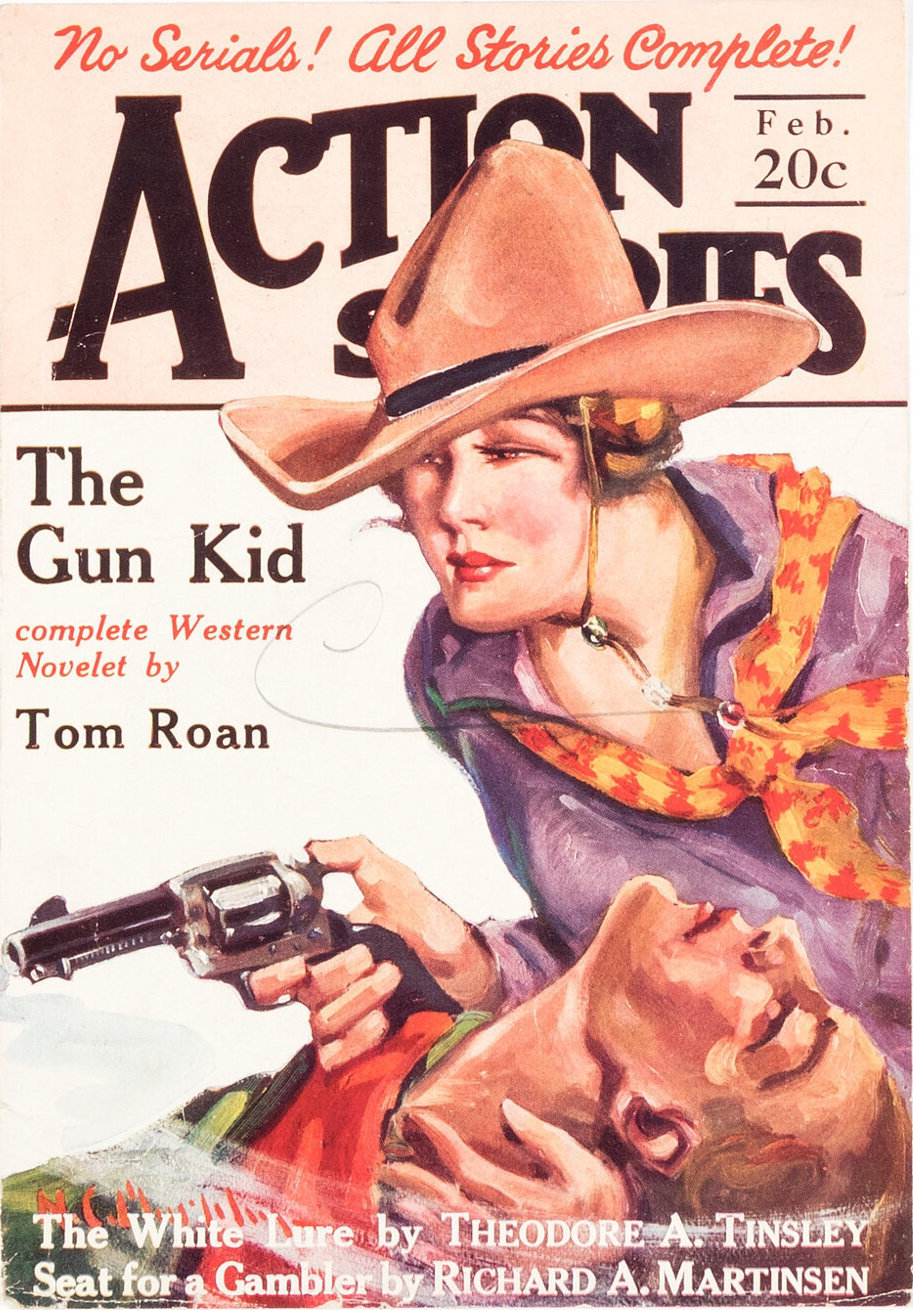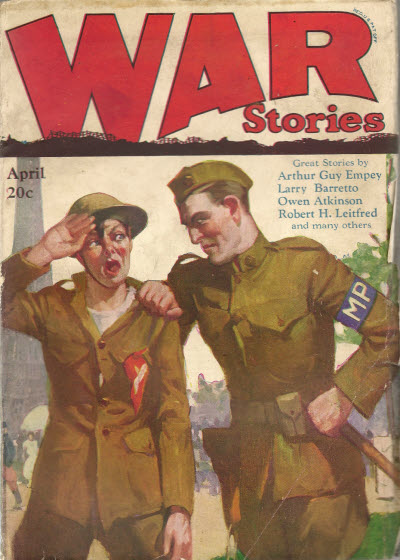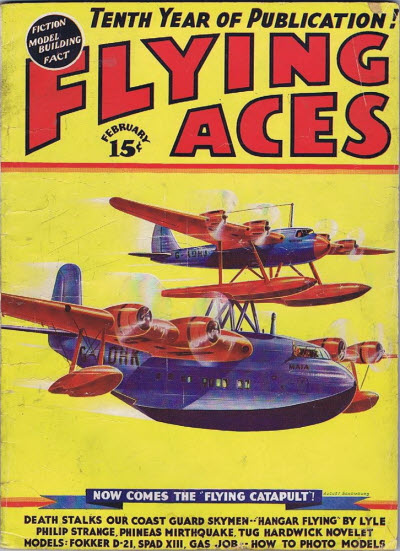Ralph Oppenheim’s Pre-squito Stories
MARCH is Mosquito Month! We’re celebrating Ralph Oppenheim and his greatest creation—The Three Mosquitoes! We’ll be featuring three early tales of the Mosquitoes over the next few Fridays,but we’re gonna start this year by looking at Mr. Oppenheim’s pre-Mosquito pulp stories. So, let’s get things rolling, as the Mosquitoes like to say as they get into action—“Let’s Go!”
Ralph Oppenheim cut his teeth on the Haldeman-Julius’ line of Little Blue Books writing about Balzac, George Sand, and Richard Wagner—getting some good notices with a couple of his five titles. Before his last two little blue books hit the stands, the 19 year-old Oppenheim had already switched gears and had started submitting stories to the pulps.
Although Oppenheim started writing tales of the Three Mosquitoes very early in his pulp career, they were not in his first published stories—their first adventure was Oppenheim’s third published story. Both his first two stories though were aviation tales full of life or death action, and oddly, both feature parachutes.
Oppenheim’s first published pulp story appeared in the February 1927 number of Action Stories and would have hit the stands New Year’s Day, January 1st, 1927. Action Stories was Fiction House’s premier title. It printed all sorts of adventure stories—adventure, western, detective, mystery, sea, sports, and aviation. And Oppenhiem’s first story—as were many of his subsequent stories—was an aviation tale.
Doom’s Pilot
Oppenheim’s first story for  the pulps takes place at an Army Arsenal, whose innocent-looking buildings housed enough T.N.T. to blow up a fair-sized city. Although every safety precaution had been put in place, it seemed disaster was unavoidable when a letter arrived from an anarchist:
the pulps takes place at an Army Arsenal, whose innocent-looking buildings housed enough T.N.T. to blow up a fair-sized city. Although every safety precaution had been put in place, it seemed disaster was unavoidable when a letter arrived from an anarchist:
Dear Major:
For a long time we have been trying to think of a way to deal a decisive blow that will hurt hundreds instead of one or two. The naval arsenal catastrophe gave us our lucky inspiration. Because I am the only man who dares to go to such lengths, I have been chosen upon to deal the big blow that will carry our Cause so much further ahead, towards the goal of righteousness. You are helping me, major dear, by storing in that new ammunition. Before those three days are up, you and your whole stinking outfit, and as much of the surrounding villages that your excellent shells can reach, will be in hell where you belong. I have to go with you, for I must remain on the spot to see that everything goes right, but I shall know that I have died doing my best to bust this damned country.
Best regards, major, from one who will soon have the pleasure of dying with you.—The Fearless One.
Their only hope of preventing the destruction of the base and the near by towns may lie with one of the pilots’ pride and joy—a speedy flying racer he had built and waswas planning to enter in an upcoming race!
Red terror of anarchism—a hurricane—and one of Uncle Sam’s birdmen in a grim, ruthless battle with Doom!
- Download “Doom’s Pilot” (February 1927, Action Stories)
A Parachutin’ Fool
Oppenheim’s second published pulp story was another aviation tale, this time for the pages of Dell’s War Stories for April 1927. In this second tale, John Slade is posted at an American base in France. Slade is to take a photographer over the lines in a two-seater observation crate without an escort in hopes of getting vital pictures of a ruined town the German’s are presently holding that the Allies want to take. Slade is an exceptional, daredevil pilot perfect for the job—his only fear is using a parachute! And this job may require that if he can’t get through the German’s A.A. guns and any planes they may send out to shoot them down. Will he be able to face his fears when the time comes?
published pulp story was another aviation tale, this time for the pages of Dell’s War Stories for April 1927. In this second tale, John Slade is posted at an American base in France. Slade is to take a photographer over the lines in a two-seater observation crate without an escort in hopes of getting vital pictures of a ruined town the German’s are presently holding that the Allies want to take. Slade is an exceptional, daredevil pilot perfect for the job—his only fear is using a parachute! And this job may require that if he can’t get through the German’s A.A. guns and any planes they may send out to shoot them down. Will he be able to face his fears when the time comes?
Slade watched Harlan jump, saw the parachute open, yet he kept his seat in the burning plane! Why? A thrilling vital yarn of the aviation corps.
- Download “A Parachutin’ Fool” (April 1927, War Stories)
It was Oppenheim’s third published story that hit paydirt! It was the story that introduced Kirby, Travis and Carn—The Three Mosquitoes! Check back next week for that first tale of the inseparable trio!





 That sound can only mean one thing—that Bachelor of Artifice, Knight of Calamity and an alumnus of Doctor Merlin’s Camelot College for Conjurors is back to vex not only the Germans, but the Americans—the Ninth Pursuit Squadron in particular—as well. Yes it’s the marvel from Boonetown, Iowa himself—Lieutenant Phineas Pinkham!
That sound can only mean one thing—that Bachelor of Artifice, Knight of Calamity and an alumnus of Doctor Merlin’s Camelot College for Conjurors is back to vex not only the Germans, but the Americans—the Ninth Pursuit Squadron in particular—as well. Yes it’s the marvel from Boonetown, Iowa himself—Lieutenant Phineas Pinkham! 